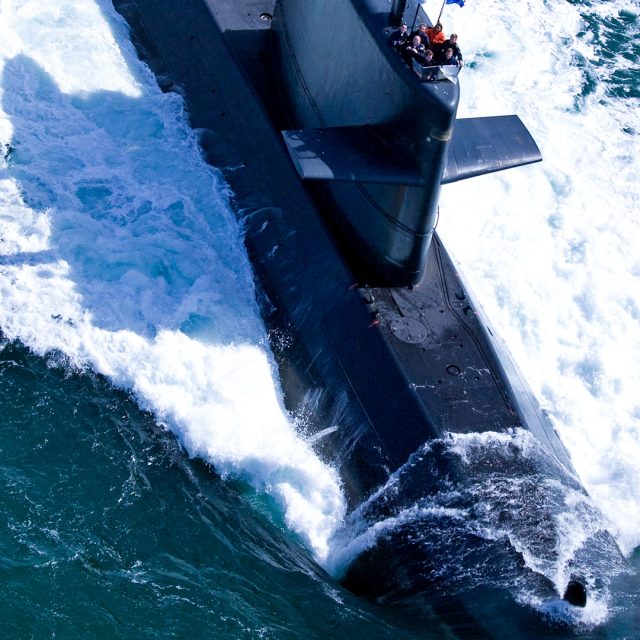
Optimising a submarine power plant by implementing a PEM fuel cell and a PMSM in a first principle model
A naval submarine sails in different operational modes: surfaced, at periscope depth or submerged. It needs an appropriate power plant to do so. The impact of the selected power plant on the overall submarine design is significant. Thus, selecting the right components of the power plant at an early stage is key to a successful design. In Nevesbu’s research to optimise a submarine power plant, a mean value first principle power plant model was extended with a proton exchange membrane (PEM) fuel cell model as air independent power (AIP) system and a permanent magnet synchronous machine (PMSM) as propulsion motor.

Balancing space, mass and operational performance
The overall power plant model covers energy generation, storage and distribution to the main power demands ‘propulsion’ and ‘auxiliary’. The mean value first principle model optimises a submarine power plant by balancing required space, mass and operational performances based on a pre-set operational profile. The result of this is insight into optimised design concepts considering volume, mass and efficiency given operational needs that extend beyond current submarine capabilities.
Mean value first principle simulation model
In earlier research, Nevesbu has created a mean value first principle simulation model of a diesel-electric propulsion system. This time-domain model can be used for submarine design as it determines the dimensions of the system components. Note that time-domain models are required for the design of a submarine power plant as the size of energy storages depend on accumulated power consumption. In this model, a direct current propulsion motor, batteries and a diesel-generator set are included. For the batteries two options are present: lead acid batteries or lithium ion batteries. However, to enable assessment of more challenging mission profiles with the created model, it was recommended to extend the model with an air independent power system as a range extender, and to add a permanent magnet synchronous machine (PMSM) to increase system efficiency and decrease the required dimensions for the propulsion system. These two recommendations formed the starting point for this research.
Air independent propulsion systems
Many different AIP systems, such as a stirling engine and different types of fuel cells, have been considered. It was decided to implement the proton exchange membrane fuel cell (PEMFC) in the model, because a fuel cell is noise and vibration free in contrast to mechanical AIP systems. Moreover, the PEMFC is a mature technology with many applications (including submarine power plants) and it has a good power density compared to other fuel cell types. With the modelled components, eight different power plant configurations have been simulated. All modelled configurations use a diesel generator set to charge the batteries during the transits.
PMSM as a submarine propulsion motor
Based on a literary study the PMSM seems a very promising concept for the submarine propulsion motor as it is said to be small, highly efficient and low in signatures. In order to see if a PMSM motor is actually more beneficial than the direct current motor, this motor has been implemented in the model. The PMSM model is based on a dynamic motor model.
Mean value first principle modelling pays off
Nevesbu’s research has shown that, with respect to the design methodology, the choice for mean value first principle modelling (for both dimension prediction and performance models) pays off. This approach leads to versatile, flexible models that can cope with numerous system concepts and mission profiles. In this article you can read more about the AIP concepts, model overview and design procedure, PEMFC as an AIP system and the simulation results.
Would you like to know more about our submarine services and experience?
